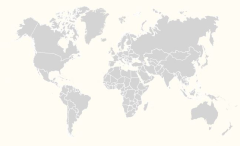French explorer and colonizer, founder of Quebec, discoverer of Lake Champlain, and governor of Canada; often called the Father of Canada.
Background
His father was master of a fishing vessel, and Champlain learned from him the sailor's trade. He fought in the army of King Henry IV during the civil wars in Brittany, from about 1593 to 1598, attaining the rank of maréchalmarechal des logis, or billeting officer. Then, according to his own account, he went to Spain, and through the favor of his uncle, who was a shipmaster in the Spanish service, made a journey to the West Indies and Mexico. On returning to France in 1601 or 1602, he wrote a picturesque account of his travels. (The manuscript, with his own illustrations, is in the John Carter Brown Library in Providence, R.I.; some scholars have alleged that it is a hoax).
A man of great courage and foresight, Champlain was also profoundly religious. The most recent serious biography is by Samuel Eliot Morison: Samuel De Champlain, Father of New France (1972).
Career
His appetite whetted for travel and discovery, Champlain found a place on the 120-ton Bonne RenomméeRenommee, which sailed for Canada in the spring of 1603 to explore the upper St. Lawrence and to buy furs from the Indians. He ascended the river in a pinnace as far as the Lachine Rapids, at the present Montreal, where he made the acquaintance of the Algonquins. On his return to France, he published a record of his journey, an appeal for exploration and colonization.
In 1604 Champlain joined the North American expedition of Pierre de Monts as geographer and cartographer. The first disastrous winter, in which 35 out of 79 men died of scurvy, was passed on Ste.-Croix Island, in the estuary that now marks the boundary between Maine and New Brunswick. The two following winters were spent at Port Royal, near Digby, Nova Scotia. Champlain and his party passed the summers exploring the rivers of Maine and charting the coast as far south as Cape Cod and Martha's Vineyard; they were possibly the first Europeans to visit the site of Boston.
In 1608 he returned to Canada to found a year-round trading post. On July 3, 1608, he landed at the present Quebec and established there the first settlement north of Florida which has been continuously occupied. The winter in his rude "Habitation" was frightful; only eight of the 24 colonists survived.
In the summer of 1609 Champlain with newcomers from France again ascended the St. Lawrence. With two other Frenchmen he joined a war party of Algonquins and allied Hurons; they went by canoe up the Richelieu River to the great lake to which Champlain gave his name, then southward to (probably) the site of Ticonderoga. Champlain and his companions were the first recorded white men to set foot on the soil of New York State, although Giovanni da Verrazano had visited New York Bay in 1524. When his party met the Iroquois Indians, the traditional enemies of the Algonquins, Champlain killed three of the enemy by a single discharge of his arquebus. The use of this new weapon caused a long resentment among the Iroquois.
In 1615 with 12 French companions he made his way to the Huron country by Georgian Bay on Lake Huron. There he joined a Huron expedition against the Iroquois, crossed Lake Ontario at its eastern end, and attacked the Iroquois' Onondaga stronghold, which was probably situated on Lake Onondaga, within the present city of Syracuse. He was defeated by the Iroquois and wintered with the Hurons. His detailed description of the Hurons was the first written record of this people's life.
In 1612 Champlain was appointed lieutenant of Canada under an honorary governor. He later became governor of New France and ruled the little colony with wisdom and rectitude. His dream was to establish in the northern continent a self-sufficient Christian empire where French and Indians would mingle harmoniously. To further his ideas he returned often to France to importune the king and wealthy entrepreneurs for aid. His most important book, the Voyages of 1632, a history, a guide, and a prophecy of Canada's greatness, was partly propaganda for his cause.
In 1629, when the English occupied Quebec, Champlain was carried, a prisoner, to England. When New France was restored to France, Champlain returned to his colony as governor.




